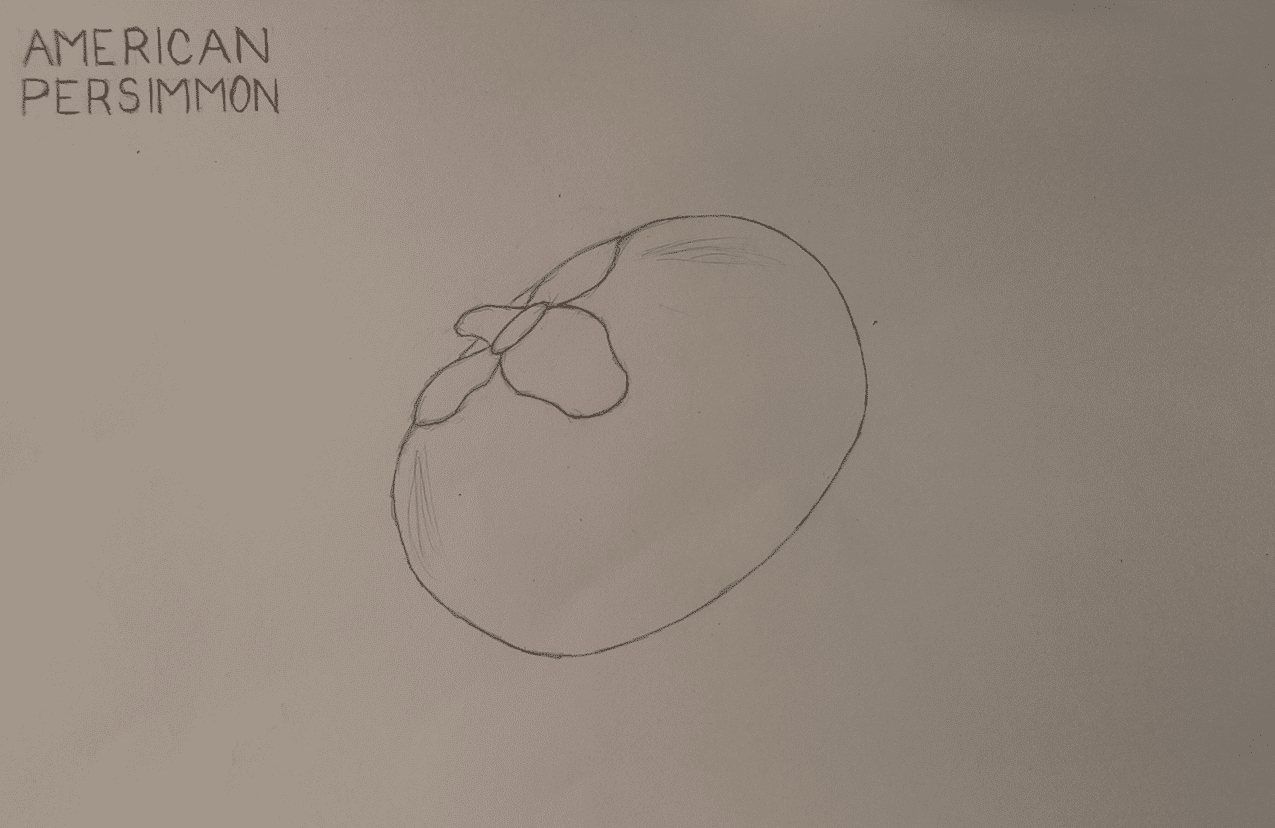Be it ever so humble, the American Persimmon is a joy to behold for those in the know. Now that the weather has changed and folks are out in the woods for hunting season it is also time to look at this forgotten delicacy as a free food to add to your winter dinners as a new delight.
Persimmon (Diospyros virginiana)
Native persimmon, Diospyros virginiana, is a persimmon species commonly called the American persimmon, common persimmon, eastern persimmon, “‘simmon”, “possumwood”, or “sugar-plum”. Additional common names include Date plum, winter plum, or Jove’s fruit.
This wonderful fruit got its Latin name from the Greek god Zeus and means “fruit of the gods.”
General Information:
In addition to being appreciated by humans, the fruits are eaten by a variety of wild life, including coyotes, raccoons, opossums, bears and are a loved treat for deer and thus for all of us Venison loving deer hunters .
Caution: It is only after the first frost that the fruit (orange colored) is tasty; earlier-picked fruits will really pucker your lips!
You can find persimmon trees in forests, but being a light-loving tree, they are more productive in more open woodlands. They are also common along roadsides, fence rows, and railroads. The species reproduces both sexually via seeds and asexually via root runners. Persimmons have separate male and female trees and given their ability for asexual reproduction, you will often find groves of persimmons that are all female or all male.
Persimmon trees are easily identified by their dark bark patterned in distinct blocks. Additionally, the trees are not known to produce many (if any) large branches, and will usually have more spindly fruit bearing branches that may snap under the weight of a heavy fruit set.
The leaves are simple, ovate with smooth margins.
White, four-petal flowers are produced in late spring, almost always after the last freeze. The flowers begin to turn brown as they age and begin to develop fruit
The fruits ripen in the fall to a light orange, sometimes with a bluish cast to. As the fruits ripen, the smooth skin may often become slightly wrinkled..
For the gardener:
The persimmon tree is easy to grow, and it’s a great choice for beginner gardeners. The tree grows slowly.
Trees can reach 30 to 80 feet high with an average life span of 50-150 years. Trees can have an average trunk size can reach 1-2′ across but is only typical in trees over 25 years but most will be found as small “Shrub” type bushes.
Trees started from seed can start producing fruit as soon as 4 years old.
For the woodworker:
It is one of two species in the U.S. in the ebony family. The tree itself is not real common, so sources of this wood will require some effort; smaller mills often have some persimmon logs. Its properties, however, make the search worthwhile.
Persimmon wood is very tough and very hard, and is especially noted for its ability to retain a smooth surface (smooth and a high polish appearance) even after long usage. The desirable wood of persimmon is the sapwood, which is white in color in the tree but turns to a grayish brown color when exposed to air.
Persimmon sapwood was the preferred wood for spinning bobbins, weaving shuttles, and thread spools. It was often used for pool and billiard cues. But the most prevalent use was for golf club heads. Today, we might find this a good wood for strong handles, or for uses where distinctiveness is a key factor.
The heartwood, which is found in small amounts only in older trees, is dark brown to black, and is not what most users are looking for. However, the heartwood is an excellent substitute for ebony. (Although the wood looks like black locust, it does not fluoresce under black light.)
For the Herbalist:
Immature fruits contain a large amount of tannin and are astringent. They have been used to make tea for use in gargling for sore throats. The tea was also used to treat warts, cancers, heartburn, diarrhea and stomach aches.
Historic Weird Facts:
Cooking oil, with a flavor like that of peanut oil, can be extracted from the seeds. Confederate soldiers boiled persimmon seeds as a coffee substitute during the Civil War.
Health and Nutrition:
1. Loaded with Nutrients
Though small in size, persimmons are packed with an impressive amount of nutrients.
In fact, one persimmon (168 grams) contains:
• Calories: 118
• Carbs: 31 grams
• Protein: 1 gram
• Fat: 0.3 grams
• Fiber: 6 grams
• Vitamin A: 55% of the RDI
• Vitamin C: 22% of the RDI
• Vitamin E: 6% of the RDI
• Vitamin K: 5% of the RDI
• Vitamin B6 (pyridoxine): 8% of the RDI
• Potassium: 8% of the RDI
• Copper: 9% of the RDI
• Manganese: 30% of the RDI
Persimmons are also a good source of thiamin (B1), riboflavin (B2), folate, magnesium and phosphorus.
2. Excellent Source of Powerful Antioxidants
Persimmons are an excellent source of powerful antioxidants like carotenoids and flavonoids. Diets rich in these compounds have been linked to a reduced risk of certain diseases, including heart disease and diabetes.
3. May Benefit Heart Health
Persimmons contain flavonoid antioxidants and tannins, which benefit heart health by reducing blood pressure, lowering inflammation and decreasing cholesterol levels.
4. May Help Reduce Inflammation
Persimmons are rich in the powerful antioxidant vitamin C, which helps lower inflammation, believed to be a common cause of many diseases.
Persimmons are a high-fiber fruit. And, fiber that has been shown to lower LDL cholesterol levels.
Weather Folklore:
It has been said, and the story passed down for generations, that if you cut a persimmon seed in half lengthwise, the embryo will be shaped in one of three ways. Cutting a thin seed in half is not exactly easy, and in fact, can be very dangerous. Use tools, keep your fingers clear, and be extremely careful if you attempt to do this, I find it best to wedge the seed between a couple pies of wood so it don’t slip when cutting.
• A knife – Said to represent, or forecast an icy, cold winter that will ‘cut’ through your skin, down to the bone.
• A fork – Thought to indicate a mild winter. “Can’t pick up much snow with a fork”, is the mindset.
• A spade “spoon” – Representative of the need for a shovel, for plentiful snow
I checked the winter of 2022-2023 for my area is SPADE “SPOON”
In the Kitchen:
After the fruit ripens, the texture of the flesh is somewhat custard-like, with a sweet flavor similar to honey, and was a breakfast staple for many Early Americans.
James Beard’s “Famous” Persimmon Bread recipe
3½ cups sifted flour
1½ teaspoons salt
2 teaspoon baking soda
1 teaspoon ground mace or nutmeg
2 to 2½ cups sugar
1 cup melted unsalted butter and cooled to room temperature
4 large eggs, at room temperature, lightly beaten
2/3 cup Cognac, bourbon or whiskey
(substitution for bourbon or other alcohol would be to use 1 part vanilla extract and 2 parts water for each tablespoon — There are 10 tablespoons and 2 teaspoons in 2/3 cup.)
2 cups persimmon puree
2 cups toasted walnuts (or pecans)
2 cups raisins or other fruit, (apricots or dates)






